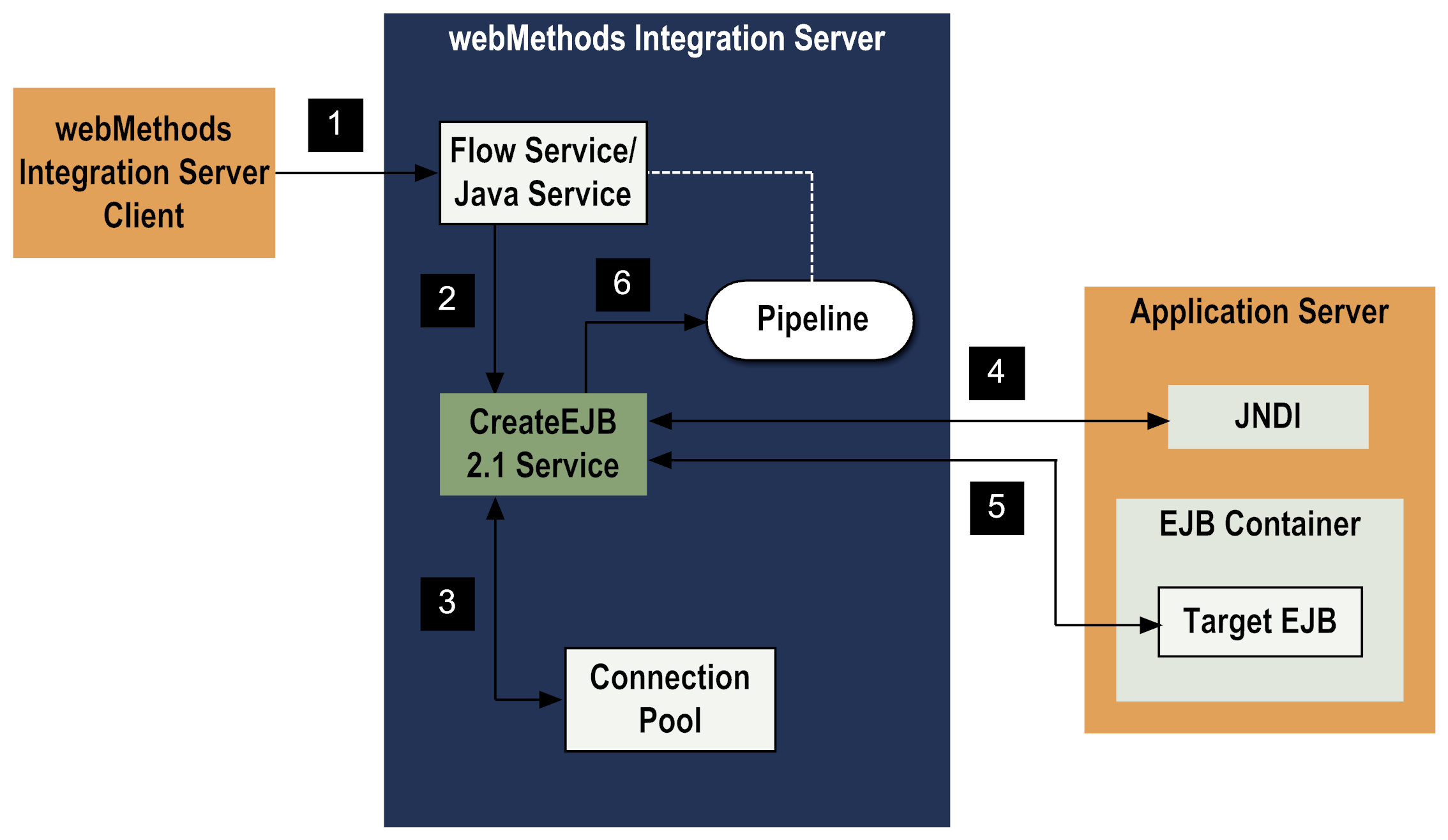

Step | Description |
1 | An Integration Server client runs a flow service or Java service on Integration Server. |
2 | The flow or Java service invokes a CreateEJB 2.1 adapter service on Integration Server. You configured the adapter service earlier using Designer. |
3 | The CreateEJB 2.1 adapter service gets a connection from the service's connection pool. You created and enabled the adapter connection earlier using Integration Server Administrator. |
4 | Through its connection, the CreateEJB 2.1 adapter service accesses the application server's JNDI to look up the EJBHome interface of the EJB for which the service was configured. JNDI will return the remote stub representing this EJBHome. |
5 | The CreateEJB 2.1 adapter service invokes the configured EJBHome method on the application server. If the method takes any parameters, the values are extracted from the pipeline and passed to the remote method. If the operation is successful, the adapter service returns an array of javax.ejb.Handle instances that represent the remote EJBs. If the operation is unsuccessful, the adapter service throws an AdapterException or AdapterConnectionException. For more information about how the adapter handles exceptions, see Adapter Logging and Exception Handling. |
6 | The CreateEJB 2.1 adapter service saves the resulting remote EJB handle(s) and status on pipeline. These handles may then be de-serialized by the caller to obtain the underlying EJBs or simply passed into a suitably configured InvokeEJB 2.1 adapter service. |